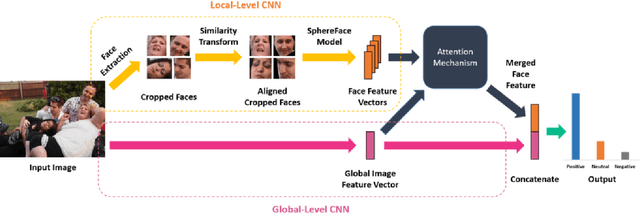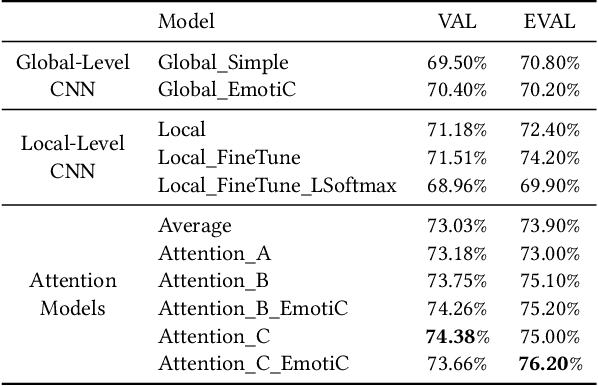Aarush Gupta
Indian Institute of Technology Roorkee, India
SnapGen: Taming High-Resolution Text-to-Image Models for Mobile Devices with Efficient Architectures and Training
Dec 12, 2024Abstract:Existing text-to-image (T2I) diffusion models face several limitations, including large model sizes, slow runtime, and low-quality generation on mobile devices. This paper aims to address all of these challenges by developing an extremely small and fast T2I model that generates high-resolution and high-quality images on mobile platforms. We propose several techniques to achieve this goal. First, we systematically examine the design choices of the network architecture to reduce model parameters and latency, while ensuring high-quality generation. Second, to further improve generation quality, we employ cross-architecture knowledge distillation from a much larger model, using a multi-level approach to guide the training of our model from scratch. Third, we enable a few-step generation by integrating adversarial guidance with knowledge distillation. For the first time, our model SnapGen, demonstrates the generation of 1024x1024 px images on a mobile device around 1.4 seconds. On ImageNet-1K, our model, with only 372M parameters, achieves an FID of 2.06 for 256x256 px generation. On T2I benchmarks (i.e., GenEval and DPG-Bench), our model with merely 379M parameters, surpasses large-scale models with billions of parameters at a significantly smaller size (e.g., 7x smaller than SDXL, 14x smaller than IF-XL).
LightSpeed: Light and Fast Neural Light Fields on Mobile Devices
Oct 26, 2023Abstract:Real-time novel-view image synthesis on mobile devices is prohibitive due to the limited computational power and storage. Using volumetric rendering methods, such as NeRF and its derivatives, on mobile devices is not suitable due to the high computational cost of volumetric rendering. On the other hand, recent advances in neural light field representations have shown promising real-time view synthesis results on mobile devices. Neural light field methods learn a direct mapping from a ray representation to the pixel color. The current choice of ray representation is either stratified ray sampling or Plucker coordinates, overlooking the classic light slab (two-plane) representation, the preferred representation to interpolate between light field views. In this work, we find that using the light slab representation is an efficient representation for learning a neural light field. More importantly, it is a lower-dimensional ray representation enabling us to learn the 4D ray space using feature grids which are significantly faster to train and render. Although mostly designed for frontal views, we show that the light-slab representation can be further extended to non-frontal scenes using a divide-and-conquer strategy. Our method offers superior rendering quality compared to previous light field methods and achieves a significantly improved trade-off between rendering quality and speed.
* Project Page: http://lightspeed-r2l.github.io/ . Add camera ready version
Structure-Preserving Instance Segmentation via Skeleton-Aware Distance Transform
Oct 08, 2023Abstract:Objects with complex structures pose significant challenges to existing instance segmentation methods that rely on boundary or affinity maps, which are vulnerable to small errors around contacting pixels that cause noticeable connectivity change. While the distance transform (DT) makes instance interiors and boundaries more distinguishable, it tends to overlook the intra-object connectivity for instances with varying width and result in over-segmentation. To address these challenges, we propose a skeleton-aware distance transform (SDT) that combines the merits of object skeleton in preserving connectivity and DT in modeling geometric arrangement to represent instances with arbitrary structures. Comprehensive experiments on histopathology image segmentation demonstrate that SDT achieves state-of-the-art performance.
Parametric Variational Linear Units (PVLUs) in Deep Convolutional Networks
Nov 02, 2021



Abstract:The Rectified Linear Unit is currently a state-of-the-art activation function in deep convolutional neural networks. To combat ReLU's dying neuron problem, we propose the Parametric Variational Linear Unit (PVLU), which adds a sinusoidal function with trainable coefficients to ReLU. Along with introducing nonlinearity and non-zero gradients across the entire real domain, PVLU acts as a mechanism of fine-tuning when implemented in the context of transfer learning. On a simple, non-transfer sequential CNN, PVLU substitution allowed for relative error decreases of 16.3% and 11.3% (without and with data augmentation) on CIFAR-100. PVLU is also tested on transfer learning models. The VGG-16 and VGG-19 models experience relative error reductions of 9.5% and 10.7% on CIFAR-10, respectively, after the substitution of ReLU with PVLU. When training on Gaussian-filtered CIFAR-10 images, similar improvements are noted for the VGG models. Most notably, fine-tuning using PVLU allows for relative error reductions up to and exceeding 10% for near state-of-the-art residual neural network architectures on the CIFAR datasets.
An Attention Model for group-level emotion recognition
Jul 09, 2018



Abstract:In this paper we propose a new approach for classifying the global emotion of images containing groups of people. To achieve this task, we consider two different and complementary sources of information: i) a global representation of the entire image (ii) a local representation where only faces are considered. While the global representation of the image is learned with a convolutional neural network (CNN), the local representation is obtained by merging face features through an attention mechanism. The two representations are first learned independently with two separate CNN branches and then fused through concatenation in order to obtain the final group-emotion classifier. For our submission to the EmotiW 2018 group-level emotion recognition challenge, we combine several variations of the proposed model into an ensemble, obtaining a final accuracy of 64.83% on the test set and ranking 4th among all challenge participants.
 Add to Chrome
Add to Chrome Add to Firefox
Add to Firefox Add to Edge
Add to Edge